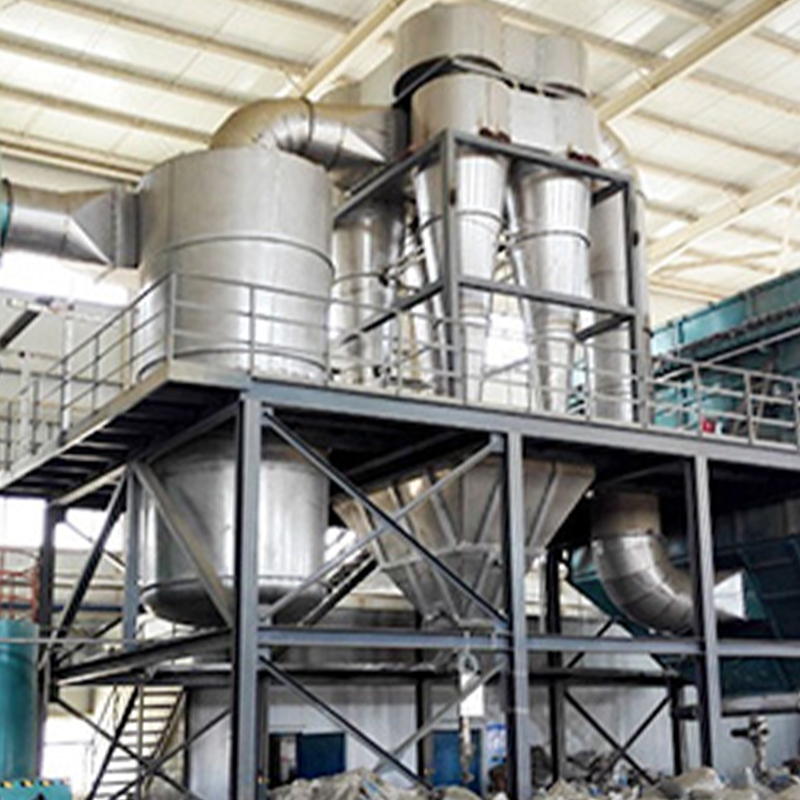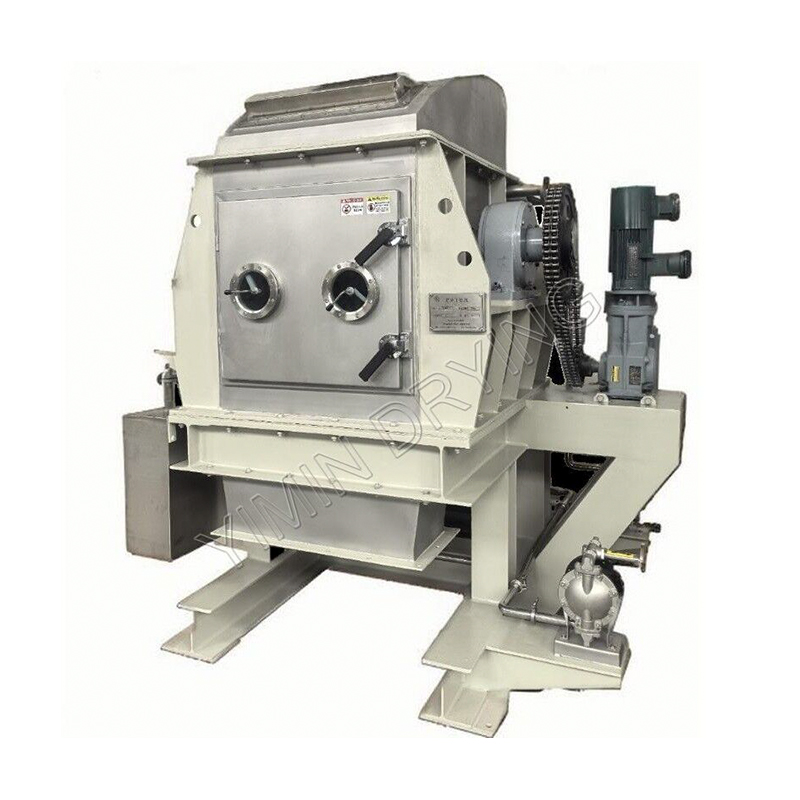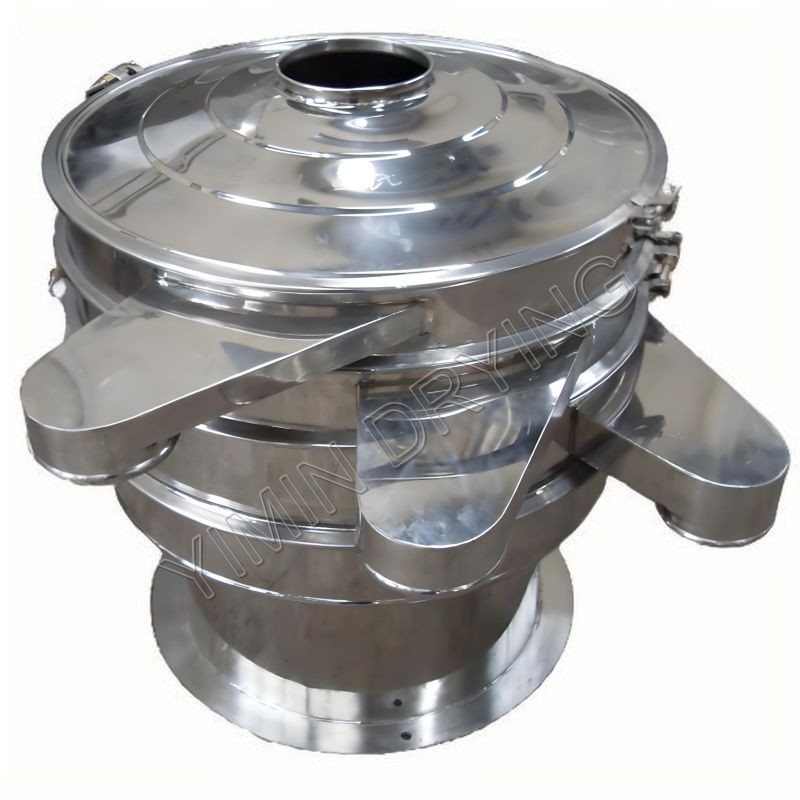The Spin Flash Dryer: A Comprehensive Overview of Technology, Applications, and Advantages
The Spin Flash Dryer is a highly efficient and versatile drying technology widely employed across various industries for the continuous drying of cohesive and non-cohesive pastes, filter cakes, and high-viscosity slurries. Its distinctive design and operational principles make it particularly well-suited for heat-sensitive products and applications requiring fine control over particle size and moisture content.
1. Principle of Operation
The core principle of the Spin Flash Dryer revolves around the instantaneous and thorough dispersion of wet feed material into a hot drying medium, typically air, leading to rapid moisture evaporation. The process can be broken down into several key stages:
Feed Introduction: Wet material, often conditioned to a pumpable consistency or pre-milled, is introduced into the drying chamber via a screw feeder or pump.
Dispersion and Atomization: Upon entering the drying chamber, the material encounters a high-speed rotating rotor (or disintegrator). This rotor mechanically disperses the wet feed into fine particles or droplets, significantly increasing the surface area for heat and mass transfer. Simultaneously, the hot drying gas is introduced tangentially or axially into the chamber, creating a swirling vortex.
Flash Drying: The finely dispersed particles are immediately entrained in the hot gas stream. The large surface area and high temperature differential facilitate near-instantaneous (flash) evaporation of moisture from the product. The residence time of the particles in the drying chamber is very short, typically a few seconds, which is crucial for heat-sensitive materials.
Classification and Collection: As the moist gas and dried particles move upwards within the drying chamber, a classifier (often integrated into the chamber design) separates the dried product from larger, still-wet particles. The larger particles fall back into the drying zone for further drying, ensuring optimal moisture uniformity. The dried fine particles are carried out with the exhaust gas and subsequently collected in a cyclone separator, bag filter, or other suitable dust collection system.
Exhaust Gas Treatment: The moisture-laden exhaust gas is typically vented to the atmosphere after passing through appropriate gas cleaning equipment to meet environmental regulations.
2. Key Design Features and Components
A typical Spin Flash Dryer system comprises several essential components working in synergy:
Drying Chamber: The main vessel where drying occurs. Its conical or cylindrical shape is designed to optimize gas flow and particle classification.
Rotor/Disintegrator: A high-speed rotating mechanism at the base of the drying chamber responsible for dispersing the wet feed. Different rotor designs (e.g., paddle, pin, or cage type) are used depending on the product characteristics.
Hot Air Generator: Provides the necessary hot drying medium, typically via a direct-fired or indirect-fired air heater.
Feed System: Consists of a screw feeder, pump, or other suitable mechanism to continuously introduce the wet material into the dryer.
Cyclone Separator/Bag Filter: Used for the primary collection of dried product from the gas stream.
Induced Draft (ID) Fan: Creates the necessary airflow through the system.
Control System: Monitors and regulates critical parameters such as inlet/outlet temperatures, airflow, and feed rate to ensure stable and efficient operation.
3. Advantages of Spin Flash Dryer Technology
The Spin Flash Dryer offers several significant advantages over other drying technologies:
High Thermal Efficiency: Rapid and thorough mixing of product with hot gas leads to efficient heat transfer and high thermal efficiency.
Short Residence Time: The very short contact time between the product and the hot gas makes it ideal for drying heat-sensitive materials, preventing degradation or discoloration.
Compact Design: Compared to other dryers of similar capacity, Spin Flash Dryers have a relatively small footprint, saving valuable plant space.
Versatility: Capable of handling a wide range of feed materials, including pastes, slurries, and filter cakes with varying moisture contents and rheological properties.
Fine Particle Production: The inherent dispersion mechanism often results in a fine, uniform product, eliminating the need for subsequent milling in many cases.
Continuous Operation: Enables continuous processing, leading to higher throughput and reduced labor costs.
Controlled Drying: Easy to control outlet moisture content by adjusting parameters such as inlet temperature, airflow, and feed rate.
Low Maintenance: Relatively few moving parts, leading to lower maintenance requirements.
4. Applications Across Industries
The versatility and efficiency of Spin Flash Dryers have led to their widespread adoption in numerous industries, including:
Chemical Industry: Drying of pigments, dyes, inorganic salts (e.g., calcium carbonate, titanium dioxide), catalysts, agrochemicals, and polymers.
Food Industry: Production of food ingredients like starch, protein concentrates, yeast, fruit and vegetable pulps, and various food additives.
Pharmaceutical Industry: Drying of active pharmaceutical ingredients (APIs), intermediates, and excipients, often under sterile or controlled environments.
Environmental Industry: Drying of sludge from wastewater treatment plants, industrial effluents, and other waste materials for volume reduction or recovery.
Mineral and Mining: Drying of mineral concentrates, clays, and other fine particulate materials.
Ceramics Industry: Drying of ceramic powders and slurries.
5. Considerations for Selection and Operation
While highly advantageous, proper selection and operation of a Spin Flash Dryer require careful consideration of several factors:
Product Characteristics: Understanding the physical and chemical properties of the wet feed, including moisture content, viscosity, stickiness, heat sensitivity, abrasiveness, and particle size distribution.
Desired Product Specifications: Target moisture content, particle size, bulk density, and flowability of the dried product.
Heat Source Availability: Choosing between direct or indirect heating methods and the type of fuel.
Safety Considerations: Especially for drying flammable or explosive materials, inert gas purging systems and explosion protection measures may be required.
Environmental Regulations: Compliance with air emission standards and proper exhaust gas treatment.
Energy Consumption: Optimizing operational parameters to minimize energy usage.
6. Conclusion
The Spin Flash Dryer stands as a testament to efficient and adaptable drying technology. Its ability to rapidly and uniformly dry a diverse range of challenging materials while preserving product quality makes it an indispensable asset in modern industrial processing. As industries continue to seek sustainable and cost-effective solutions, the Spin Flash Dryer will undoubtedly remain at the forefront of drying innovation, contributing significantly to improved product quality, increased production efficiency, and reduced environmental impact.




 English
English русский
русский عربى
عربى Türk
Türk




